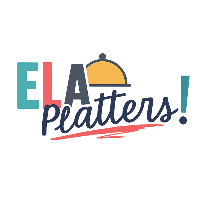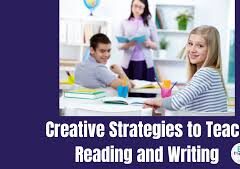Teaching reading and writing can sometimes feel like trying to teach a cat to fetch — slow, frustrating, and full of distractions. But what if we could flip the script and make learning a thrilling adventure? By tapping into creativity, we can transform the classroom into a dynamic playground where ideas run wild and literacy blooms naturally.
The Importance of Creative Teaching Methods
In today’s world, traditional methods just don’t cut it anymore. Kids are surrounded by flashing screens, endless videos, and interactive content. If we want them to fall in love with reading and writing, we need to meet them where they are — and that means being creative, adaptive, and even a little bit wild with our teaching strategies.
Building a Strong Foundation
Understanding the Basics of Literacy
Before we can fly, we need to learn how to walk. Literacy starts with the basics: understanding letters, sounds, and the magic that happens when you blend them together. Knowing where each student stands is the key to unlocking their full potential.
Setting Realistic Goals
Rome wasn’t built in a day, and neither is a proficient reader or writer. Setting small, achievable milestones helps students build confidence and stay motivated along their journey.
Creative Strategies for Teaching Reading
Storytelling with a Twist
Who doesn’t love a good story? But why not make it interactive?
Interactive Story Circles
Imagine students sitting in a circle, each adding a sentence to a growing story. One minute it’s about a lost puppy, and the next it’s about a puppy who becomes mayor. The creativity is endless — and so is the fun!
Use of Audiobooks and Podcasts
Not all reading has to be done with the eyes. Audiobooks and podcasts open new doors, especially for auditory learners. Plus, dramatic narrations can make any story come alive, transporting students straight into the heart of the action.
Gamifying Reading Sessions
Let’s be real — kids love games. So why not turn reading into one?
Reading Bingo and Treasure Hunts
Create a bingo card filled with different reading challenges or organize a scavenger hunt where each clue is hidden in a book. Suddenly, reading isn’t a chore — it’s a quest.
Visual Story Mapping
Some kids are visual learners. Allow them to draw story maps showing the sequence of events, main characters, and settings. It’s a brilliant way to help them visualize what they read and understand the structure of stories.
Role Play and Dramatic Readings
Bring stories to life by encouraging students to act them out. Whether it’s a dramatic fairy tale retelling or a mock trial for a mischievous character, role-playing deepens comprehension and builds confidence.
Creative Strategies for Teaching Writing
Writing Prompts with a Creative Spark
Forget boring “What I Did Over Summer” essays. How about, “Describe a day when gravity disappeared,” or “Write a letter from your pet to you”? Offbeat prompts light the fire of imagination.
Collaborative Story Building
One student starts a story and after a few sentences, hands it off to the next. By the end, you’ll have a hilarious, crazy story written by the whole class — and lots of laughs too!
Using Art and Music to Inspire Writing
Ask students to write a story inspired by a painting or a piece of music. This cross-medium creativity helps them make deeper connections and think outside the box.
Blogging for Kids
Start a class blog where students can publish their stories, poems, and essays. Knowing their work will be seen by an audience — even if it’s just their peers and parents — can be a huge motivator.
Journaling Adventures
Daily journals help students get comfortable with writing without the pressure of grades. Plus, journals are like time machines; years later, students can see how far they’ve come.
Integrating Technology into Reading and Writing
Educational Apps and Online Games
Apps like Epic! and Starfall make reading exciting with gamified rewards and interactive storytelling. When used smartly, technology can turbocharge literacy skills.
Digital Storytelling Tools
Tools like Book Creator or Storybird let students craft their own digital books, complete with illustrations and soundtracks. It’s not just fun — it builds serious writing and tech skills at the same time.
Encouraging a Growth Mindset in Students
Celebrating Small Wins
Every step counts. Whether it’s mastering a tricky word or finishing a story, celebrate it! High-fives, shoutouts, and stickers go a long way in building positive momentum.
Creating a Positive Learning Environment
A classroom that embraces mistakes as stepping stones creates fearless learners. When students know it’s okay to stumble, they’re more willing to stretch their creative wings.
Conclusion
Teaching reading and writing creatively isn’t just more fun — it’s more effective. When kids are engaged, inspired, and given the freedom to explore, they become passionate learners for life. So grab some props, cue the music, and let’s make literacy magical!

